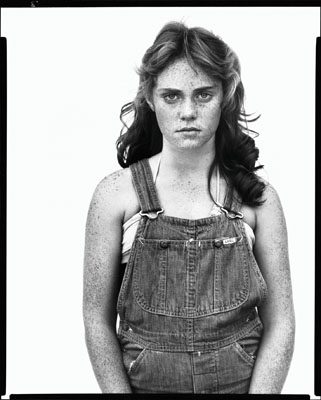
Photograph Richard Avedon
© 2008 The Richard Avedon Foundation
Richard Avedon »
Photographs 1946–2004. A Retrospective
Exhibition: 19 Oct 2008 – 19 Jan 2009
Martin-Gropius-Bau
Niederkirchnerstr. 7
10963 Berlin
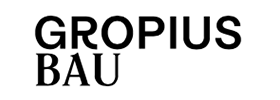
Gropius Bau
Niederkirchnerstr. 7
10963 Berlin
+49 (0)30-254860
post@gropiusbau.de
www.gropiusbau.de
Mon, Wed-Fri 12-19, Sat, Sun 10-19
This is the first retrospective exhibition of the work of the American star photographer Richard Avedon since his death in 2004. Many epoch-making and pioneering pictures are on show: the picture of the famous model Dovima, posing amidst sawdust and hay between elephants in an haute-couture creation, was revolutionary and ground-breaking in 1948; the 9.5 x 3 m. group portrait of “Andy Warhol and the members of the Factory” from 1969, where Avedon was able to bring out the individual personalities in the group; and the picture of Charles Chaplin, forming devil’s horns on his forehead and waving goodbye to McCarthyism’s USA with his gaze. Also included are Avedon’s characteristic dancing model shots with the most fêted photo models of the day, for example Twiggy and Veruschka.
Especially interesting for the venue in Berlin, in the year of the 20th anniversary of the fall of the Berlin wall, Avedon’s series from New Year’s Evening 1989 will be shown in the exhibit. Avedon traveled to Berlin on the sole purpose of photographing this extraordinary historical situation and the reaction of the people.
For more than 50 years Richard Avedon was one of the biggest names in the fashion industry, with a star status that he maintained throughout the years, and he was the first to break down the barrier between so-called serious and non-serious photography. He made a name as early as the 1950s as the world’s leading fashion photographer and was employed by the American magazine Harpers Bazaar, later by Vogue, then in 1992 ended up as the weekly New Yorker’s first regular staff photographer.
In parallel with the fashion photography, Avedon also worked with dark, emotionally charged portraits, and along with the photographer Irving Penn transformed portrait photography in the twentieth century; but whereas Penn’s portraiture was considerate and attentive, Avedon’s was radical and intense.
Avedon created an endless succession of portraits of statesmen, artists, actors and actresses. And wherever one usually has a fixed image of a person, with his photographs he shatters the picture-postcard icon and shows a portrait that provides food for thought – it may be of legendary film stars like Katherine Hepburn, Audrey Hepburn, Humphrey Bogart, Brigitte Bardot, Marilyn Monroe or the great stars of the silent film – Buster Keaton and Charles Chaplin – or of personalities ranging as wide as Karen Blixen, Truman Capote, Henry Kissinger, Dwight D. Eisenhower, Edward Kennedy, The Beatles and Francis Bacon.
The Exhibition
The retrospective exhibition features more than 200 photographs, demonstrating the scope of Avedon’s production, from the glamorous world of fashion through the more psychological portraits to reportage-oriented shots. The first photograph in the exhibition was taken in 1946, when Avedon went to Rome and Sicily just after World War II, and the last photograph in the exhibition is of the singer Björk, taken less than four months before Avedon’s sudden death.
In general, the presentation of the photographs in the exhibition is chronological, drawing selectively on picture series where Avedon concentrated on a particular range of themes, subjects or events – from travel pictures to almost registrative pictures of his dying father. Photographs from the “New York Life” reportage series from 1949 – a work commissioned by Life magazine, which Avedon at the time ended up not submitting to the magazine, and from which he first showed selections forty years later in his own book “An Autobiography” – can be seen in the exhibition.
The series points forward to other reportages shown in the exhibition as well as portrait series for which Avedon has later become famous, including “In the American West”, photos from 17 of the USA’s westernmost states in the period 1979–84, a work commissioned by The Amon Carter Museum in Fort Worth, Texas. Out of 752 portrait shots Avedon selected 124 black-and-white photographs of people who fall outside the normal social order. While it is usually politicians, celebrities and well-off people who are portrayed in the tradition of the representative portrait, the powerful have here been replaced with the powerless. Richard Avedon was awarded the Swedish Hasselblad Prize for photography in 1991.
The exhibit has been shown at the Louisiana Museum of Modern Art, Humlebœk, the International Centre for Photography, Milan, and the Jeu de Paume, Paris. Following the Martin-Gropius-Bau, the exhibit will be shown at FOAM Fotografiemuseum Amsterdam and at the SFMOMA, San Francisco.
Organizer
Berliner Festspiele in cooperation with the Louisiana Museum of Modern Art, Humlebœk and The Richard Avedon Foundation, New York.
Berliner Festspiele. An exhibition of the Louisiana Museum of Modern Art, Denmark in cooperation with the Richard Avedon Foundation. With the support of the Estate of Richard Avedon and the Center for Creative Photography, Tucson, AZ and the Fraenkel Gallery, San Francisco, CA
Mehr als 50 Jahre lang war Richard Avedon einer der bedeutendsten Fotografen in der Modeindustrie. Er hatte einen Starstatus, den er über viele Jahre hinweg bewahren konnte. Er machte sich bereits Anfang der 1950er Jahre einen Namen als führender Modefotograf der Welt und arbeitete zunächst bei der amerikanischen Modezeitschrift „Harper’s Bazaar“ und später bei der „Vogue“, bis er 1992 der erste Hausfotograf der Wochenzeitschrift „The New Yorker“ wurde.
Avedon revolutionierte zusammen mit dem Fotografen Irving Penn die Porträtfotografie des 20. Jahrhunderts, indem er dunkle, emotional aufgeladene Porträts schuf, darunter eine große Folge von Porträtaufnahmen von Staatsmännern, Künstlern, Schauspielern und Schauspielerinnen: Katherine Hepburn, Audrey Hepburn, Humphrey Bogart, Brigitte Bardot, Marilyn Monroe, Buster Keaton, Charlie Chaplin, Karen Blixen, Truman Capote, Henry Kissinger, Dwight D. Eisenhower, Edward Kennedy, die Beatles und Francis Bacon.
Die Ausstellung
Die Ausstellung „Richard Avedon: Fotografien 1946-2004“ ist die erste Retrospektive des amerikanischen Starfotografen in Deutschland. Zu sehen sind zahlreiche seiner epochalen Aufnahmen: das Bild des berühmten Models Dovima zwischen Elefanten auf Sägemehl und Heu (1948), das 10 x 3 m große und berühmte Gruppenporträt „Andy Warhol and Members of the Factory“ (1969), das Foto von Charlie Chaplin, der als Abschiedsgeste für die USA der McCarthy-Ära die Hände zu Teufelshörnern geformt an die Stirn legt. Für den Ausstellungsort Berlin, 20 Jahre nach dem Fall der Berliner Mauer, ist Avedons Serie „Brandenburg Gate“ über die Silvesternacht 1989 besonders interessant. Avedon war damals nach Berlin gekommen, um dieses außergewöhnliche historische Ereignis und die Reaktion der Menschen zu fotografieren.
Die Retrospektive zeigt über 200 Fotografien. Die erste in der Ausstellung gezeigte Aufnahme stammt von 1946, als Avedon kurz nach dem Zweiten Weltkrieg nach Rom und Sizilien reiste; die letzte Aufnahme zeigt die Sängerin Björk, aufgenommen knapp vier Monate vor Avedons plötzlichem Tod im Jahre 2004.
Die Fotografien werden in der Ausstellung chronologisch präsentiert. Gezeigt werden auch Aufnahmen einer Reportageserie „Leben in New York“ von 1949. Sie entstanden im Auftrag der Zeitschrift „Life“. Avedon lieferte sie damals jedoch nicht ab und zeigte eine erste Auswahl erst vierzig Jahre später in seinem Buch „An Autobiography“. Die Serie verweist auf andere Reportagen, die in der Ausstellung gezeigt werden, sowie Porträtserien, für die Avedon später berühmt wurde: „In the American West“, Fotos aus 17 Staaten des amerikanischen Westens aus den Jahren 1979-84, eine Arbeit im Auftrag des Amon Carter Museum in Fort Worth, Texas. 1991 erhielt Richard Avedon den schwedischen Hasselblad-Preis für Fotografie.
Veranstalter
Berliner Festspiele. Eine Ausstellung des Louisiana Museum of Modern Art, Dänemark in Kooperation mit der Richard Avedon Foundation. Mit Unterstützung des Estate of Richard Avedon und des Center for Creative Photography, Tucson, AZ und der Fraenkel Gallery, San Francisco, CA
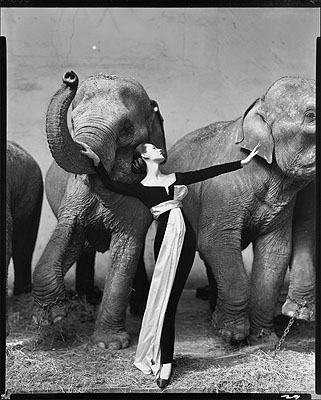
Photograph Richard Avedon
© 2008 The Richard Avedon Foundation
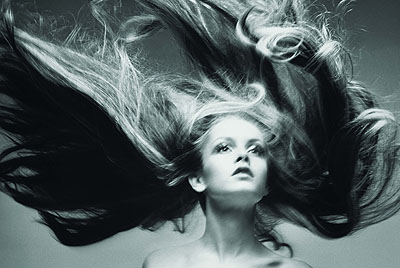
Photograph Richard Avedon
© 2008 The Richard Avedon Foundation
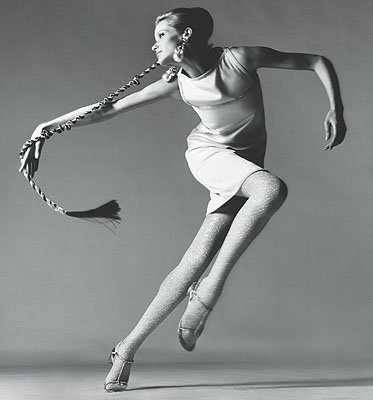
Photograph Richard Avedon
© 2008 The Richard Avedon Foundation